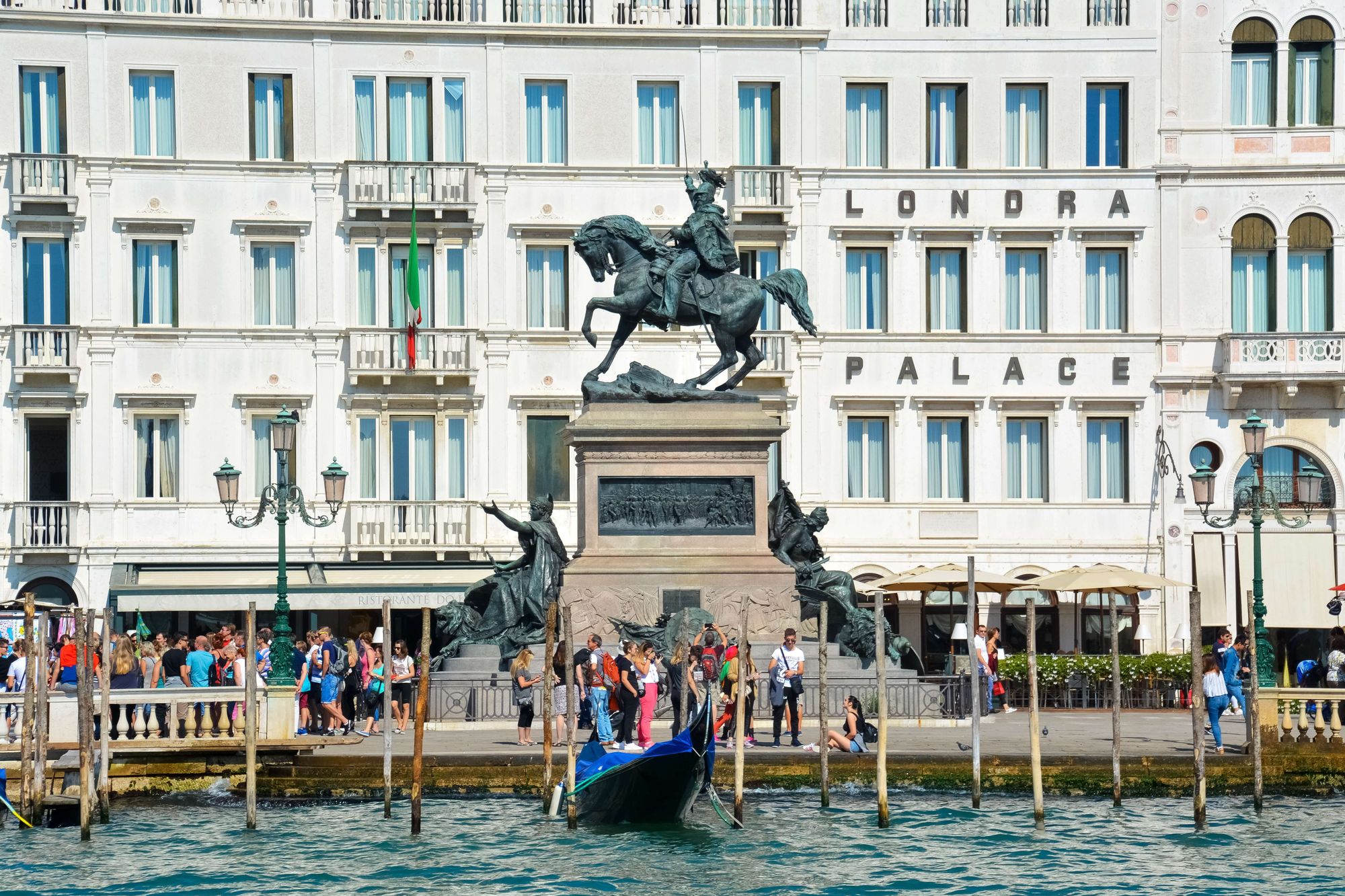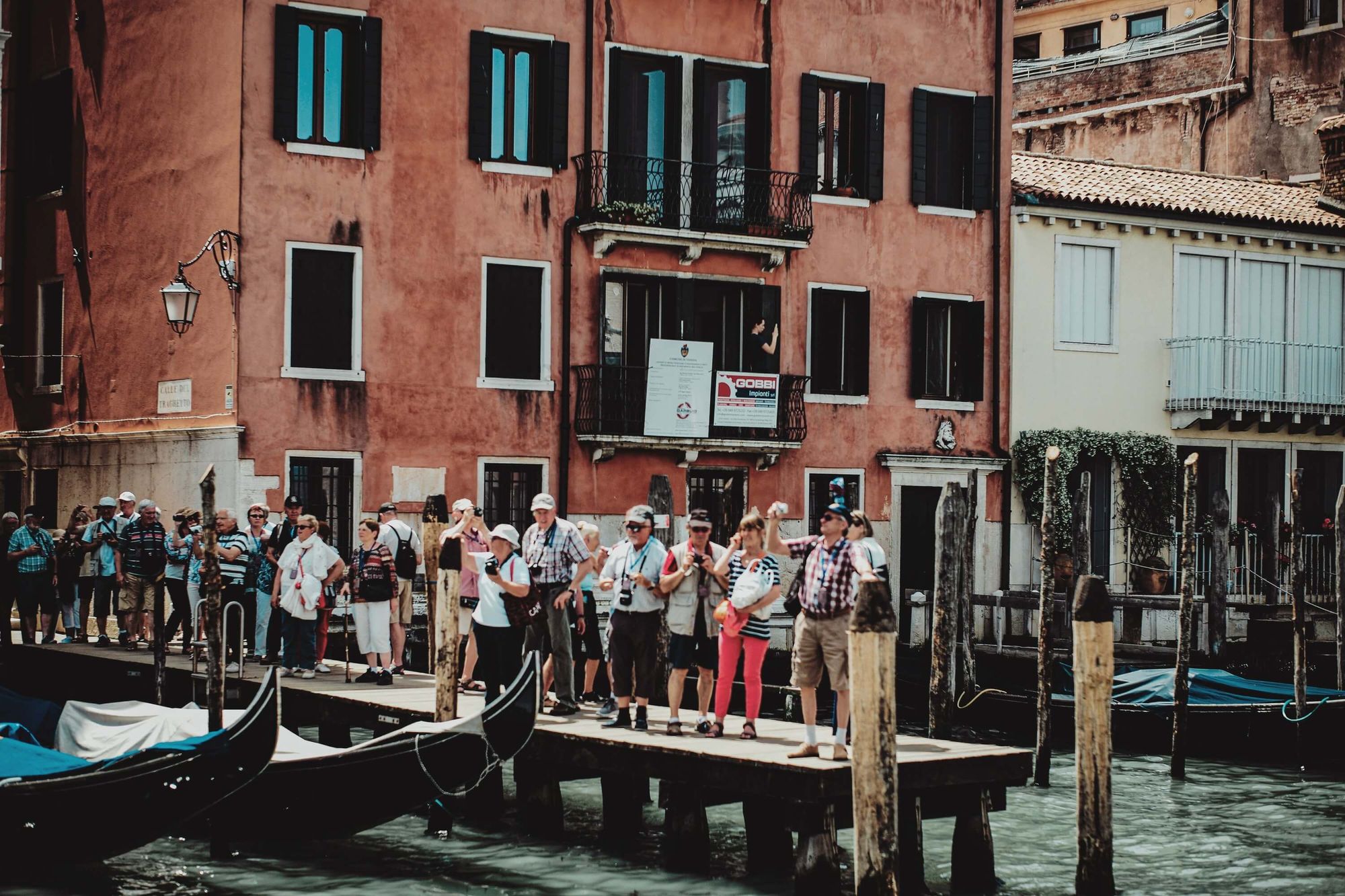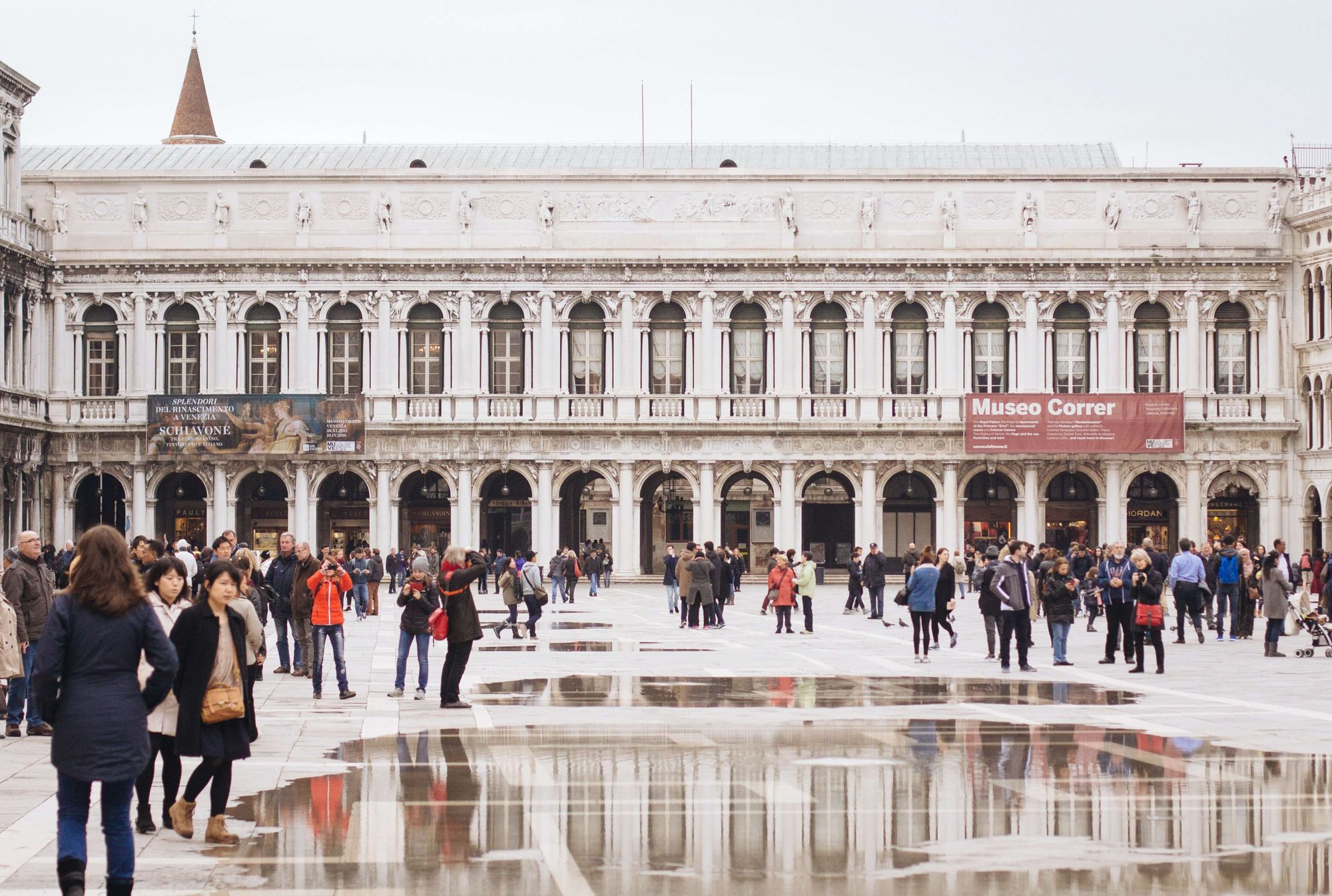THE DEATH OF VENICE
That Venice is dying or is on the way to certain death, is an idea many people around the world believe. The major problems that Venice is facing today are over-tourism, high tides, and erosion.
And these problems are of course intertwined one to another and have attached to them a multitude of other problems. Some commentators, as well as some locals, have been calling the city dead for years now.

But are really these problems unsolvable, and thus, is the true death of Venice coming? Let's find out.
OVERTUOURISM
Overtourism is of the most used terms to describe what has going on in the last decades in the city of Venice. And is by far the city's number one problem, easy to recognize especially during summertime, as approximately
around 30 million tourists each year come to visit Piazza San Marco, one of the main - if not the most famous - attractions and a world heritage site (together with the Venetian lagoon).
At the end of the day, tourism should be good for the local economy, right?
It's a source that brings tourists and money to the city and creates a new
economy for the local citizens and to the city as a whole as well.
Tourism certainly is a valuable source and it helped create a new economy, but it also came - and still comes - with a variety of problems: Venice is simply too small to host so many tourists, many of which are one-day trippers, and thus not particularly valuable, as they usually prefer not to spend money in hotels, restaurants, and museums. Many tours promote "a one day trip in Venice" or "the best free attractions of the Serenissima".
But this completely misses the point: to visit a city is not a race, but an experience to live slowly and appreciate deeply. Meanwhile, streets get clogged and people, regardless of their destination, get stuck in a carless traffic jam.

THE SIDE PROBLEMS OF OVERTOURISM
Over tourism does not just mean there are too many tourists, but it also means prices are rising (for tourists and locals alike), rents are getting higher and public services struggle to deliver a high-quality service.
People might find it lovely to cruise the canal grande with the waterbus to see all the palaces of the grand canal, but people have to go to work, and with the main streets and squares (such as Strada Nuova, or Rialto) full of people, even going to work has become tough for residents.
Years ago, in the 1960s, Venice reached its peak in terms of population; reaching around 260 thousand residents. From that moment on, the trend has been only going down. Housing became so expensive, thousand and thousand of Venice residents chose to move to the mainland, which seems way more affordable prices.
With the local population shrinking, many markets and shops for citizens closed as well, and if you take a look at all the shops, you will hardly find anything thought for residents. From the 1970s on, the number of residents dropped and now there are approximately 50 thousand on the main island of Venice.
It is without a doubt a serious problem, and if everyone is well aware and recognizes it, few are able to frame a coherent and clear solution, but there is no shared consensus.
Cruise ships were until recently a huge part of the problem but after a dangerous accident (a cruise ship collided into a dock, with many persons injured), and after many reports suggesting that cruise ships do more
harm than good to both the environment and the local economy, major Luigi Brugnaro, together with Italy's minister of arts (Beni culturali) took the decision to ban the transit of ships in the precious and small canal of Giudecca.
On the mainland, things don't seem very good either, and Mestre is looking more and more like the second chapter of the book "how not to handle millions of tourists each year". Both the islands and the mainland see
the number of citizens dropping each year.
Of course, tourism is not the only source of problems, nor is Venice the only city affected by such phenomenon. Florence and Rome are similarly struggling with the same issues. In Europe, cities like Amsterdam, Barcelona, and Paris are all seeking a way to better handle this phenomenon.
CLIMATE CHANGE
Climate change affects Venice in a pretty direct way: "acqua alta" or high tides are becoming increasingly more dangerous and frequent (they usually happen between October and January). The problem with the rising levels of the seas is one that touches all of Italy and of course, the world. The city of Venice is directly affected
by the number of floods associated with high tides, as each could cost up to billions of euros in damages.
St Mark's Square is one of the lowest points of the city and holds many precious marbles and pieces of art that are in constant danger of being destroyed because of these violent floods. Years ago, in 1966, the city witnessed a devastating high tide that destroyed Venice. the same happened just in 2019, and the news quickly
highlighted the devastating effects of this phenomenon.

Luckily, after many years, the MOSE project is ready and the lagoon of Venice comes now better protected by this system of dams that are placed between the lagoon and the Adriatic sea.
Venice has been this far protected by the MOSE, but there are at the moment still many doubts about the environmental and economical sustainability of such a project.
EROSION
Erosion can be seen as an umbrella term to describe all the missing restoration and reparation projects that Venice is missing -or missing to implement. sides of canals are falling apart, as well as parts of famous palaces facing the canal grande.
There is simply a lack of interest and practical knowledge to address at the political
level the complexity of this city. Venice has been in the centuries master of adaptation, and precisely because of this skill that the city has avoided death for so long. the most precious site of all, Piazza San Marco, is the city's number one priority.
SOLUTIONS
Locals have proposed all sorts of solutions in these years to address all the different sources of problems above mentioned, but the truth is, that tourists are still those making the rules, in a city that is now too much depending on a tourist economy.
What once was a political and commercial superpower (the Serenissima Republic of Venice) is now the city in which public officials are not able to find a solution.
The city is seemingly destined to perish because of its own beauty. many citizens gathered in association in order to address these problems, and in order to make Venice a livable city again. this is a very good sign that the city is not dead, and is, on the contrary, fighting for its own life!
This is also good because it shows that the city receives a lot of news attention and many philanthropic associations devolve money to save this city thanks to many different projects. the city's hopes and dreams.
As history teaches us, the city has been able even in the most desperate of times to find creative solutions and to save itself from all sorts of problems: wars, pandemics, and now natural disasters and tourism. The city has
still some ace in the hole and the death of Venice will certainly not be celebrated anytime soon.

